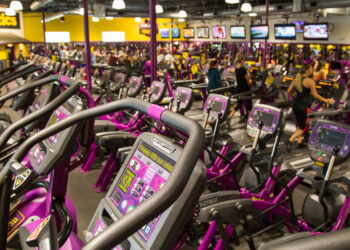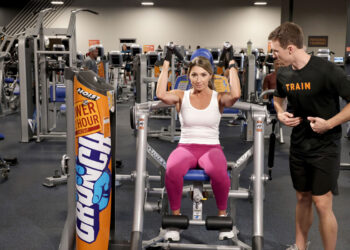Ask any gathering of club owners and operators what they think of food and beverage, and you will hear a chorus of moans and groans:
“I don’t want to be in the restaurant business.” “My ‘F & B’ area is a bottomless money pit.” “It’s a big money loser, but you gotta have it.” “We’ll just put in some vending machines.” “The members demand it, but they won’t use it.” “I won’t have it in my club because I can’t make a profit on it.”
Yes, the case against food and beverage in a club setting is a strong one. However, the arguments favoring its inclusion are equally compelling and often win the day. Most fitness and sports clubs, with over 30,000 square feet of space, offer some level of staffed food and beverage service. The reasons are many:
• Food and beverage promotes social interaction. Social interaction builds member loyalty and reduces member attrition.
• Healthy lifestyles are based on diet and exercise. Clubs that offer programs and products which address both of these needs will have a competitive edge over clubs that don’t.
• In this time-starved age, busy workers and parents don’t want to make an extra stop after working out to squeeze in a healthy breakfast, a quick lunch or a light dinner.
• Despite its operational challenges, food and beverage is a potential profit center. There are many clubs that have financially successful food and beverage operations.
• Banquets, parties and business meetings can be a profitable and effective way of bringing non-members (potential members) into your club, and exposing them to your full package of attractions.
Having made the decision to include food and beverage as a club offering, a club owner must prepare to address issues of management, programming, marketing and design. Following are five basic design guidelines for creating profitable food and beverage facilities in fitness and sports clubs:
1. Location, location, location: First and foremost, both food display and seating areas must be adjacent to and visible from the main circulation path that your members and guests will take as they arrive and depart. There are no exceptions to this rule. The demand for food and beverage in the club setting is very much influenced by impulse and convenience – both of which require an open, accessible location that is no more than a few steps off the beaten path. Food and beverage as a destination attraction that is remote from this mainstream of customers, will not work.
2. Menu: Given the right location, everything else that has to do with the physical creation of the food and beverage center depends on the menu. At the simple end of the continuum of choices, there are pre-packaged items. At the other, more complex end, there is a full range of customprepared food and beverage items. In between are numerous other menu options related to degree of difficulty, profit potential, member satisfaction, staffing requirements and infrastructure. And, depending on the threshold set by your menu choices you may or may not need: a commercial exhaust hood, an automatic firesuppression system, a grease trap, a three-compartment sink, a hand sink, a walk-in cooler/freezer or a full-time service entry. The costs associated with each of these components suggest that informed menu decisions must be made in the light of all health department, fire and building codes.
3. Hours: Once you have decided to offer food and beverage services, your members will expect it to be open whenever the club is open. This means that your operational style must be flexible enough to “staff-up” for the busy lunch period and “staff-down” for the slow periods. For most clubs, this means a counter-service operation, without wait staff, which can be run by one or two persons for most of the day. It may also mean ready-made food items on display for grab-and-go; self-service beverages; limited, off-hour menus; disposable tableware, and pay-first ordering. This kind of food and beverage operation requires plenty of counter space, display cabinets and up-front prep areas. The back-of-house kitchen is primarily used for storage and preparation of prepackaged items.
4. Capacity: The seating capacity of your food and beverage area is an important consideration. It is better to look busy and popular with 15 patrons in a room that will hold 25, than to look empty and unpopular with 15 patrons in a room that will hold 60. Therefore, it is best to create a layout of your tables and chairs in a way that allows for a modestly sized core dining area (25-40 seats), and allows for peak-use overflow in adjacent or nearby rooms, alcoves and lounges.
5. Additional Revenue: The banquet and meeting business is an important supplemental source of revenue for a club restaurant or food and beverage operation. Be sure to locate a multi-purpose conference meeting room within a manageable distance from your food-prep center, and provide adequate storage for a variety of table and chair configurations as well as a staging area for catering. You will be ready to handle birthday parties, holiday celebrations, business meetings and seminars.
Here is one final and very important thought on building a successful, club-based food and beverage business: Pay attention to aesthetics. The image of the facility as a comfortable place to linger and enjoy good food and drink in the company of friends is of utmost importance.
Hervey Lavoie is the President of Ohlson Lavoie Collaborative, a full-service architecture and planning fi rm. He can be contacted at 303.294.9244, or by email at hlavoie@olcdesigns.com.








